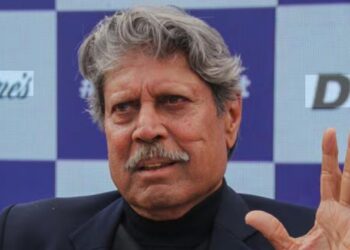In an interesting turn of event, captain Rohit Sharma has openly expressed that one of the key reasons behind India’s failure to make an impact in Australia and losing the Border-Gavaskar Trophy after more than a decade was the absence of Shardul Thakur and the lack of support from coach Gautam Gambhir in including the Mumbai all-rounder in the squad. Sources said that Rohit believes that Thakur’s all-round skills could have made a significant difference, particularly in the absence of a genuine seam-bowling all-rounder. The omission of Thakur, who had been in good form and was seen as a valuable asset in challenging conditions, has been a point of contention, with Rohit attributing India’s struggles partly to this decision. His remarks reflect growing frustration over internal decisions that, in his view, may have affected the team’s performance.
Sources have indicated that Rohit was particularly unhappy with Thakur’s absence, as it weakened India’s entire bowling attack during the series. Thakur’s ability to contribute with both the bat and ball, especially in challenging conditions, could have provided much-needed balance to the side. Rohit felt that without him, India lacked a key all-rounder who could have helped strengthen the attack, especially in pivotal moments of the series. This frustration appears to have been a significant factor in Rohit’s outspoken dissatisfaction with team selection and its impact on India’s performance in Australia.
The absence of Thakur from the squad certainly raises questions about the decision-making process within the Indian team management, particularly regarding the roles of chief selector Ajit Agarkar and coach Gambhir. If felt that Thakur’s inclusion could have strengthened the team, it’s puzzling why he wasn’t picked, especially with Agarkar, as the chief selector from Mumbai itself, being involved in the selection process.
It’s possible that Gambhir, as the head coach, had a strong influence on the final decision, given his approach to team composition and the tactical plans he envisioned. However, the question remains whether Gambhir’s influence was enough to overrule both the captain and the selector, or if there were other factors at play—like internal team dynamics or specific tactical preferences for that series—that led to Thakur’s omission.
If Gambhir indeed played a central role in this decision, it could reflect his growing power within the team setup, but it also raises concerns about alignment between the captain, coach, and selectors. In such situations, one might expect a more collaborative approach, but this case highlights the complexities of internal decision-making and the potential for friction when there is a lack of consensus.
As reported earlier by CricBlogger, there were discussions within the team management about including Mohd Shami in the squad, especially as he was regaining match fitness after his performances for Bengal in domestic cricket. However, it was Gambhir who objected to Shami’s inclusion, despite backing from other members of the management and former coach Ravi Shastri. This decision, which appears to have stemmed from Gambhir’s vision for the team and tactical preferences, became a point of contention, particularly as Shami’s absence was felt during critical matches.

















Your article helped me a lot, is there any more related content? Thanks! https://accounts.binance.com/fr/register?ref=GJY4VW8W